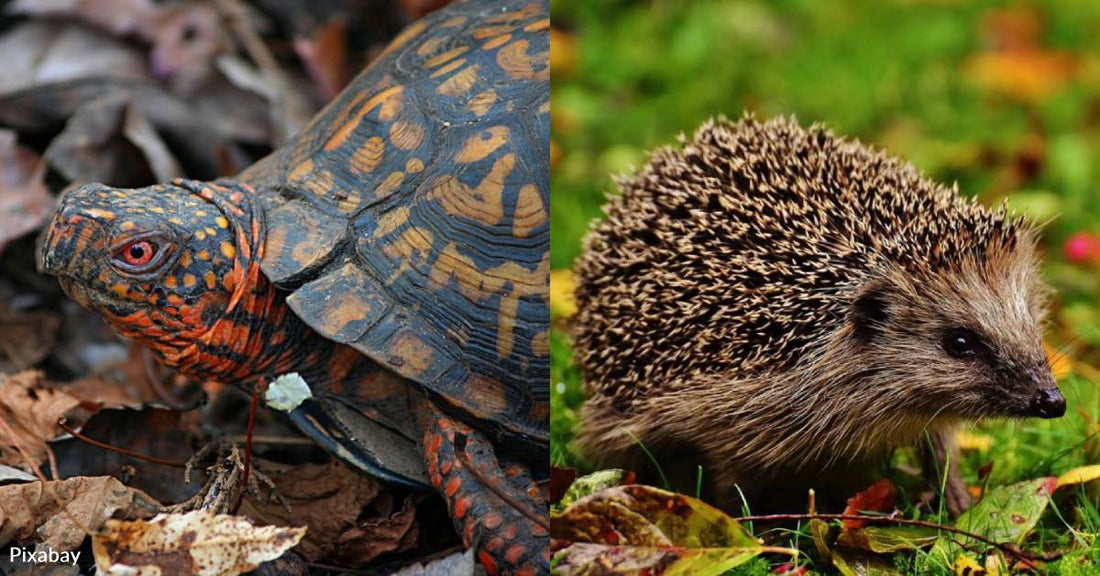7th Annual Holiday Toy & Treat Event! Bring Joy To a Shelter Pet
10 Beneficial Animals That Depend on Leaf Litter
Michelle Milliken
During the fall, the foliage is a highlight for many people. Day trips to see the changing leaves are common, and there’s even a lucrative tourism industry stemming from longer trips. Of course, when all that beauty comes to an end, what we’re left with are piles of dead leaves. There’s magic in those, too, though. Not only can leaving some leaves where they are improve your soil health, insulate perennials, and help improve your garden next year, it can also provide habitat for a variety of beneficial species. Here are just a few of them.
Earthworms
Burrowing through the soil underneath the leaf litter – and eating the litter itself – are an abundance of one beneficial species: earthworms. As earthworms eat the leaves, and their droppings trail behind them, nutrient distribution is improved. That can strengthen roots, helping them reach down further into the soil. As a part of the food web, earthworms also serve as an important source of nutrition for other animals that may be poking around the litter.
Butterflies, Bees, Moths

Pollinators, which help produce about a third of the crops we eat, are also plentiful in leaf litter. Many butterfly and moth species – including the striking luna moth – overwinter in leaf litter either as caterpillars, in cocoons, or as adults. This helps ensure they’ll be around in the spring and summer to help pollinate. Joining them in their work will be bumble bees. Bumble bee queens dig into the soil just under leaf litter to survive the winter, as well.
Birds
There are plenty of other insects that join those pollinators in the leaf litter, which is helpful for birds. They can poke around the leaves to find dinner, either in the form of juicy insects or possibly berry and nut remnants from trees. It can also help them feed their babies when the time comes. One species, the ovenbird, also builds nests on the ground in leaf litter. The more litter there is, the better their nests will be hidden. Meanwhile, the more birds we help, the better, as they’re important seed dispersers who sometimes pollinate, as well.
Salamanders

Another leaf litter dweller that helps keep insect populations in check – and thankfully chows down on mosquitoes – is the salamander. These amphibians not only find food among the dead leaves, but they also benefit from their cover in the wintertime. Salamanders need moisture to survive. The leaves provide that, along with enough warmth to keep safe until cold weather subsides.
Frogs and Toads
Searching for insects alongside their fellow amphibian are frogs and toads. These ravenous bug snackers are a natural pesticide whose diet helps agricultural output by controlling populations of insects that can damage crops. They’ll continue to be farmer’s friends by eating what they find in the leaf litter, and they’ll also take cover in it during the winter. They’ll often burrow down in the soil just below the protective leaf layer to stay warm and moist.
Turtles

An animal that may be burrowing nearby is the box turtle, which plays a key role in keeping waterways healthy. Turtles spend a fair amount of the year digging through the leaves for dinner, with insects, worms, and snails on the menu. They also often bury their eggs there for safety. Once it starts getting cold, they dig under the leaf litter, which keeps them protected and insulated, to brumate the winter away.
Snakes
Another animal that undergoes brumation – essentially the reptile version of hibernation – is the snake. Many species of snake also rest away the winter in a burrow nestled under leaf litter. It’s prime hunting ground the rest of the year, too. Though snakes may give people pause, they provide a ton of benefits, including eating pests that carry zoonotic diseases, healing properties within their venom, and serving as food to animals like opossums, another hero of our natural world.
Eastern Red Bats
Bats are surprisingly beneficial for our environment, too, pollinating, dispersing seeds, and helping cave-dwelling species survive thanks to their nutrient-rich droppings. They also eat a ton of pests that can damage crops. Many bats overwinter in caves or even migrate to warmer areas during the winter, but there are some that don’t. Among them is the eastern red bat, which often digs into the leaf litter to hibernate, looking like a dead leaf itself.
Hedgehogs

A fellow mammal making use of the leaf litter during hibernation is the hedgehog, found in the wild throughout Europe and Asia. Hedgehogs need to bulk up for the winter, and they can do so by foraging in the leaves for caterpillars, slugs, and earthworms. As the weather cools, they often gather leaf litter for their winter nests, and an absence of items like this in gardens and yards is one of the reasons their numbers have fallen in recent decades. They’re an indicator species that helps reflect the state of the environment, so looking out for them is important.
Chipmunks
Another mammal connected to the leaf litter is the chipmunk, which helps disperse seeds and important fungi through its droppings. They’ll also use leaves as nesting material, as they help insulate their burrows during hibernation. At other times of the year, the leaves help with camouflage from predators, and they also help them find food like insects and even salamanders.
So, when you’re sighing looking at that pile of dead leaves in your yard, don’t be afraid to leave some of them where they are. You’re not being lazy. You’re helping all these animals.

